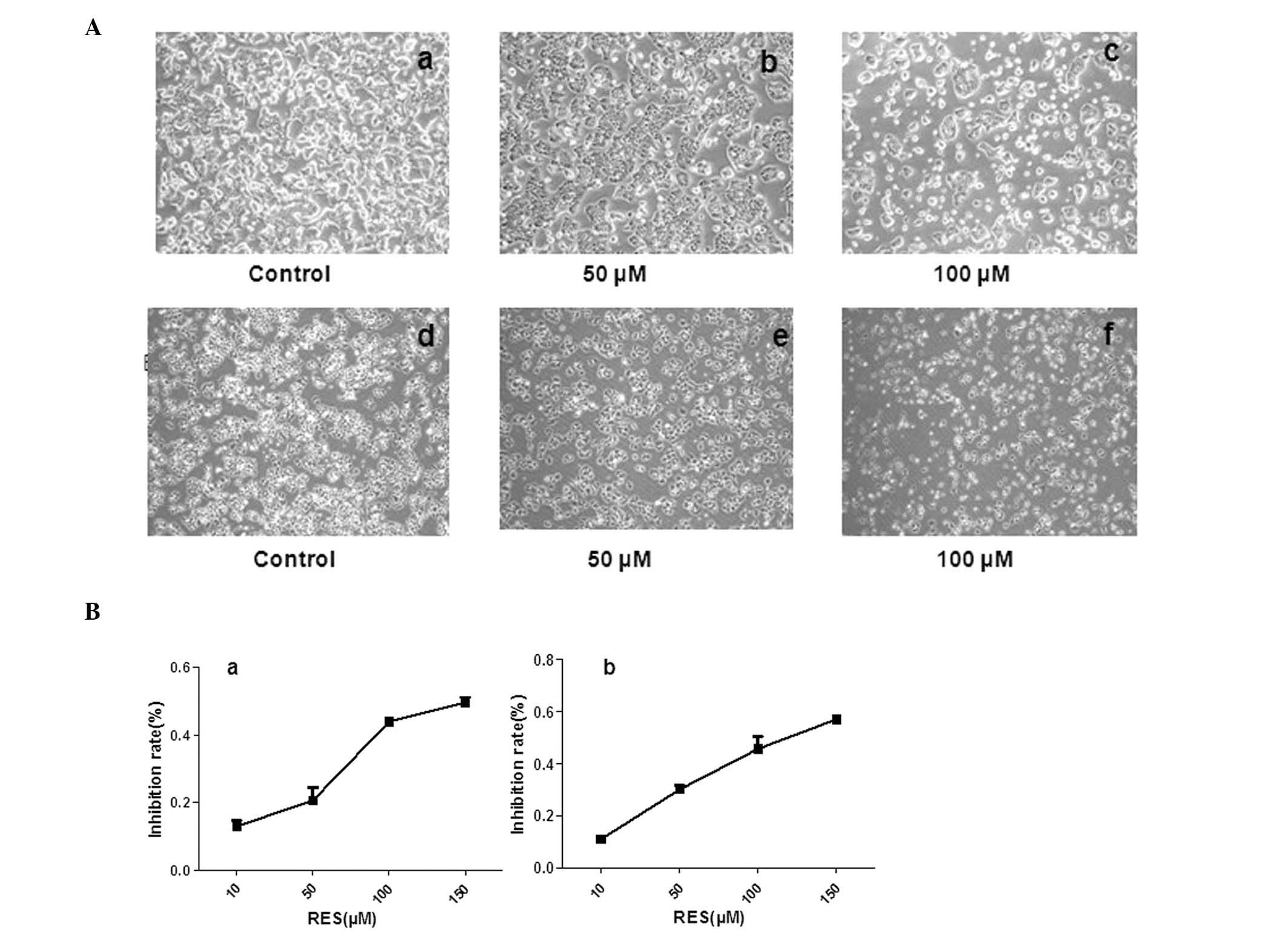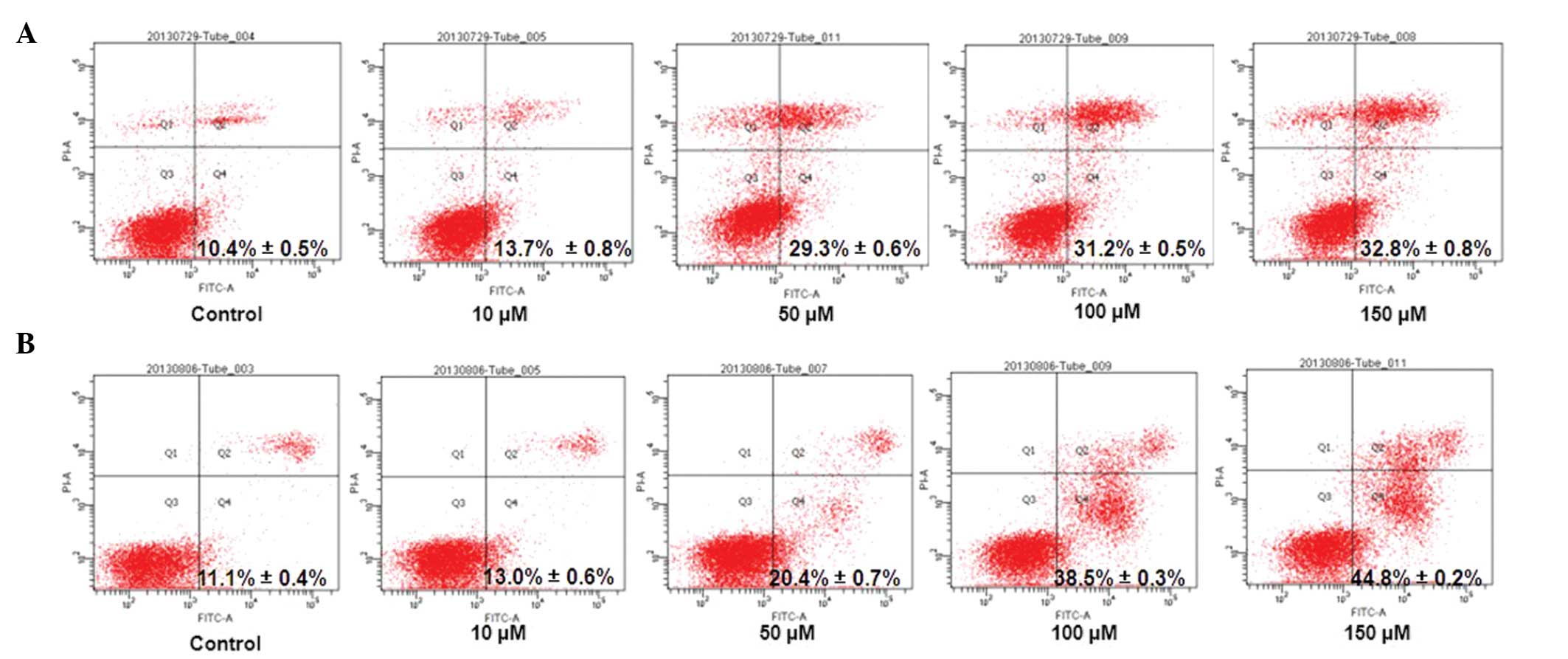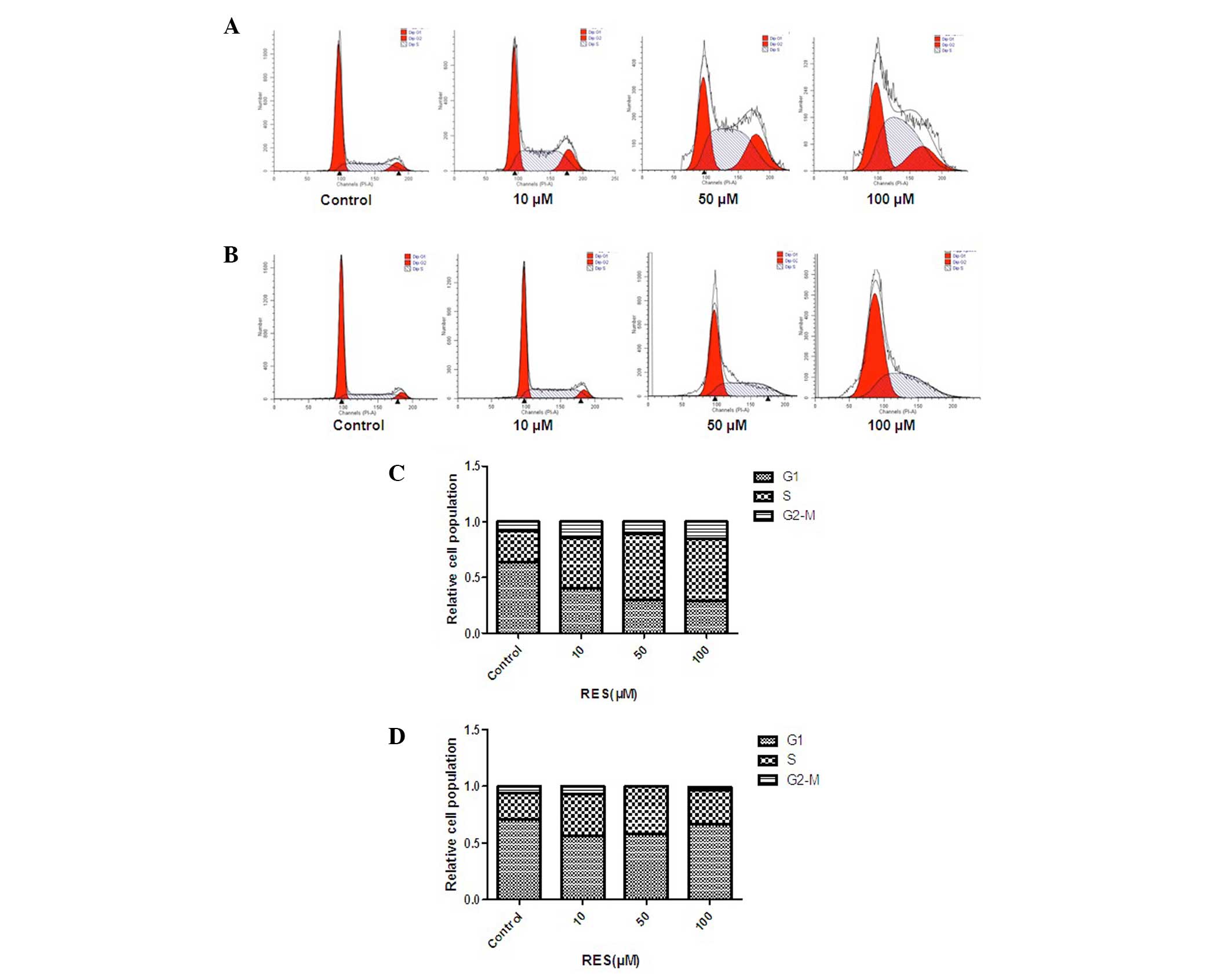|
1
|
Fulda S: Resveratrol and derivatives for
the prevention and treatment of cancer. Drug Discov Today.
15:757–765. 2010. View Article : Google Scholar : PubMed/NCBI
|
|
2
|
Calabrese EJ, Mattson MP and Calabrese V:
Dose response biology: the case of resveratrol. Hum Exp Toxicol.
29:1034–1037. 2010. View Article : Google Scholar : PubMed/NCBI
|
|
3
|
Park SJ, Ahmad F, Philp A, et al:
Resveratrol ameliorates aging-related metabolic phenotypes by
inhibiting cAMP phosphodiesterases. Cell. 148:421–433. 2012.
View Article : Google Scholar : PubMed/NCBI
|
|
4
|
Szekeres T, Fritzer-Szekeres M, Saiko P
and Jäger W: Resveratrol and resveratrol analogues -
structure-activity relationship. Pharm Res. 27:1042–1048. 2010.
View Article : Google Scholar
|
|
5
|
Szekeres T, Saiko P, Fritzer-Szekeres M,
Djavan B and Jäger W: Chemopreventive effects of resveratrol and
resveratrol derivatives. Ann NY Acad Sci. 1215:89–95. 2011.
View Article : Google Scholar
|
|
6
|
Athar M, Back JH, Kopelovich L, Bickers DR
and Kim AL: Multiple molecular targets of resveratrol:
Anti-carcinogenic mechanisms. Arch Biochem Biophys. 486:95–102.
2009. View Article : Google Scholar
|
|
7
|
Tennen RI, Michishita-Kioi E and Chua KF:
Finding a target for resveratrol. Cell. 148:387–389. 2012.
View Article : Google Scholar
|
|
8
|
Jemal A, Siegel R, Xu J and Ward E: Cancer
statistics, 2010. CA Cancer J Clin. 60:277–300. 2010. View Article : Google Scholar
|
|
9
|
Siegel RL, Jemal A and Ward EM: Increase
in incidence of colorectal cancer among young men and women in the
United States. Cancer Epidemiol Biomarkers Prev. 18:1695–1698.
2009. View Article : Google Scholar
|
|
10
|
De la Rosa L, Alvarez-Parrilla E and
González-Aguilar GA: Fruit and vegetable phytochemicals: Chemistry,
nutritional value and stability Phenolic Compounds: Chemistry and
Occurrence in Fruits and Vegetables. Wiley-Blackwell, EUA; pp.
53–88. 2010
|
|
11
|
Agarwal S, Arya V and Zhang L: Review of
P-gp Inhibition data in recently approved new drug applications:
utility of the proposed [I(1) ]/IC(50) and [I(2) ]/IC(50) criteria
in the P-gp decision tree. J Clin Pharmacol. 53:228–233. 2013.
|
|
12
|
Nutakul W, Sobers HS, Qiu P, et al:
Inhibitory effects of resveratrol and pterostilbene on human colon
cancer cells: a side-by-side comparison. J Agric Food Chem.
59:10964–10970. 2011. View Article : Google Scholar
|
|
13
|
Piotrowska H, Kucinska M and Murias M:
Biological activity of piceatannol: leaving the shadow of
resveratrol. Mutat Res. 750:60–82. 2012. View Article : Google Scholar : PubMed/NCBI
|
|
14
|
de Athayde Moncorvo Collado A, Corbalán N,
Homolya L, Morero R and Minahk C: Resveratrol modulates ATPase
activity of liposome-reconstituted ABCG1. FEBS Lett. 587:2359–2363.
2013.PubMed/NCBI
|
|
15
|
Um JH, Park SJ, Kang H, et al:
AMP-activated protein kinase-deficient mice are resistant to the
metabolic effects of resveratrol. Diabetes. 59:554–563. 2010.
View Article : Google Scholar : PubMed/NCBI
|
|
16
|
Yasuda Y, Saito M, Yamamura T, Yaguchi T
and Nishizaki T: Extracellular adenosine induces apoptosis in
Caco-2 human colonic cancer cells by activating caspase-9/−3 via
A(2a) adenosine receptors. J Gastroenterol. 44:56–65. 2009.
|
|
17
|
Allan LA and Clarke PR: Apoptosis and
autophagy: Regulation of caspase-9 by phosphorylation. FEBS J.
276:6063–6073. 2009. View Article : Google Scholar : PubMed/NCBI
|
|
18
|
Boucher D, Blais V and Denault JB:
Caspase-7 uses an exosite to promote poly(ADP ribose) polymerase 1
proteolysis. Proc Natl Acad Sci USA. 109:5669–5674. 2012.
View Article : Google Scholar : PubMed/NCBI
|
|
19
|
Rodríguez-Berriguete G, Galvis L, Fraile
B, et al: Immunoreactivity to caspase-3, caspase-7, caspase-8, and
caspase-9 forms is frequently lost in human prostate tumors. Hum
Pathol. 43:229–237. 2012.PubMed/NCBI
|
|
20
|
Peralta-Leal A, Rodríguez-Vargas JM,
Aguilar-Quesada R, et al: PARP inhibitors: new partners in the
therapy of cancer and inflammatory diseases. Free Radic Biol Med.
47:13–26. 2009. View Article : Google Scholar : PubMed/NCBI
|
|
21
|
Galluzzi L, Vitale I, Abrams JM, et al:
Molecular definitions of cell death subroutines: recommendations of
the Nomenclature Committee on Cell Death 2012. Cell Death Differ.
19:107–120. 2012. View Article : Google Scholar : PubMed/NCBI
|
|
22
|
Langelier M-F and Pascal JM: PARP-1
mechanism for coupling DNA damage detection to poly(ADP-ribose)
synthesis. Curr Opin Struct Biol. 23:134–143. 2013. View Article : Google Scholar : PubMed/NCBI
|
|
23
|
Yang L, Zhang HW, Hu R, et al: Wogonin
induces G1 phase arrest through inhibiting Cdk4 and cyclin D1
concomitant with an elevation in p21Cip1 in human cervical
carcinoma HeLa cells. Biochem Cell Biol. 87:933–942. 2009.
View Article : Google Scholar
|
|
24
|
Kim MY: Nitric oxide triggers apoptosis in
A375 human melanoma cells treated with capsaicin and resveratrol.
Mol Med Rep. 5:585–591. 2012.PubMed/NCBI
|
|
25
|
Majumdar AP, Banerjee S, Nautiyal J, et
al: Curcumin synergizes with resveratrol to inhibit colon cancer.
Nutr Cancer. 61:544–553. 2009. View Article : Google Scholar : PubMed/NCBI
|
|
26
|
Soria G and Gottifredi V: PCNA-coupled p21
degradation after DNA damage: The exception that confirms the rule?
DNA Repair (Amst). 9:358–364. 2010. View Article : Google Scholar
|
|
27
|
Beckerman R, Donner AJ, Mattia M, et al: A
role for Chk1 in blocking transcriptional elongation of p21 RNA
during the S-phase checkpoint. Genes Dev. 23:1364–1377. 2009.
View Article : Google Scholar
|
|
28
|
Adon AM, Zeng X, Harrison MK, et al: Cdk2
and Cdk4 regulate the centrosome cycle and are critical mediators
of centrosome amplification in p53-null cells. Mol Cell Biol.
30:694–710. 2010. View Article : Google Scholar : PubMed/NCBI
|















